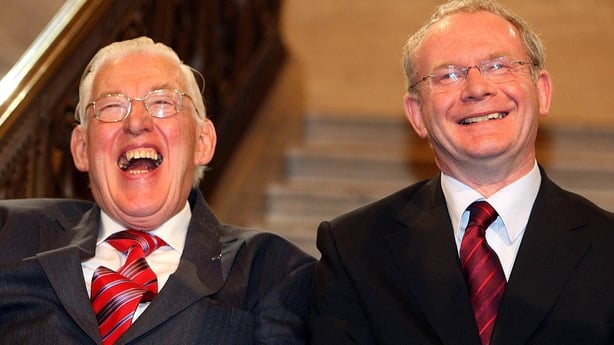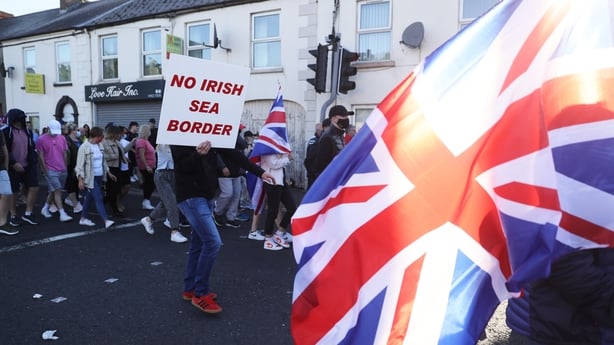What is the Good Friday Agreement?
Almost 25 years ago, on 10 April 1998, the Good Friday Agreement was signed.
The historic deal coincided with an end to 30 years of violence in Northern Ireland which claimed more than 3,600 lives and injured 47,000 people.
It was a political accommodation negotiated by the parties in Northern Ireland - except the DUP. They did not participate in protest at the inclusion of Sinn Fein.
The talks culminated in a deal at Easter - hence the name – though unionists prefer to call it the Belfast Agreement.
It followed the loyalist and republican ceasefires of the mid-nineties.
Negotiators tried to find common ground between the competing constitutional pulls of nationalism and unionism.
The American, British and Irish Governments were all heavily involved.
It was endorsed by separate referenda on both sides of the border in May 1998.

So what did they put in place?
The politicians agreed to share power. A legislative Assembly and an Executive of local ministers was formed at Stormont.
Ministers from the Executive and the Dáil agreed to meet regularly for cross-border co-operation in agriculture, health, education, environment, tourism and transport.
A similar mechanism sought to foster relationships with politicians in the Scottish and Welsh Assemblies and the British parliament, and other smaller legislatures like the Isle of Man.
It ticked all the boxes; internal relations in Northern Ireland, North South relations and East West relations across the Irish Sea.
That was that all sorted then?
Not at all, politics was only part of it.
Contentious issues like the release of paramilitary prisoners, the continued existence of armed groups, decommissioning of their weapons and the reform of policing, dogged the process in its early years.
Stormont was regularly shelved as the politicians struggled with crisis after crisis.

Did it get better?
It did but it took time. When the DUP and Sinn Féin became the dominant parties of unionism and nationalism and agreed to share power, a decade of relatively stable government followed.
The early days were characterised by the warmth of the personal relationship between former sworn enemies DUP leader Ian Paisley and Martin McGuinness of Sinn Féin.
They got along so famously as First and Deputy First Minister that they were nicknamed the "Chuckle Brothers".
How did things come unstuck?
Any system that demands political opponents share power is always going to be tricky.
Various issues strained relationships. After Brexit, the DUP's focus shifted to Westminster.
It held the balance of power there as MPs wrestled with the kind of relationship they wanted with the EU.
Back in Belfast simmering tensions over Irish language legislation and the prospect of a huge overspend in a botched green energy scheme of all things, prompted Sinn Féin to pull out of government.
Stormont spent three years in cold storage. It was 2020 before it returned.

So where are we now?
The insistence that Brexit would not mean a hard border on the island of Ireland required a special arrangement to protect the EU’s single market in the Republic of Ireland.
For goods moving into Northern Ireland from Britain, and potentially across the border, the UK government accepted checks at Northern Ireland’s ports rather than at the border itself.
Unionists opposed the plan. They said it cuts them off economically and constitutionally from the rest of the UK.
The DUP pulled down the Executive in 2022 over it and are refusing to restore power-sharing until their concerns are addressed.

So are people celebrating the 25th anniversary of the agreement then?
Some will and some will not.
Certain things have changed for the better, like policing, other issues remain unresolved.
British government plans to end all civil and criminal cases related to the Troubles is rejected by all sides.
Some working class loyalists feel they did not necessarily benefit from the peace process.
Walls still divide some Protestant and Catholic communities in Belfast and paramilitaries still exert influence.
But there is no doubt the agreement was a major achievement given the violence that preceded it.
Some say 2,000 people, who would otherwise have been murdered, are alive today because of it.
The international forces that helped shape the Good Friday Agreement are keen to celebrate it.
But peace building is a slow process – a work in progress







